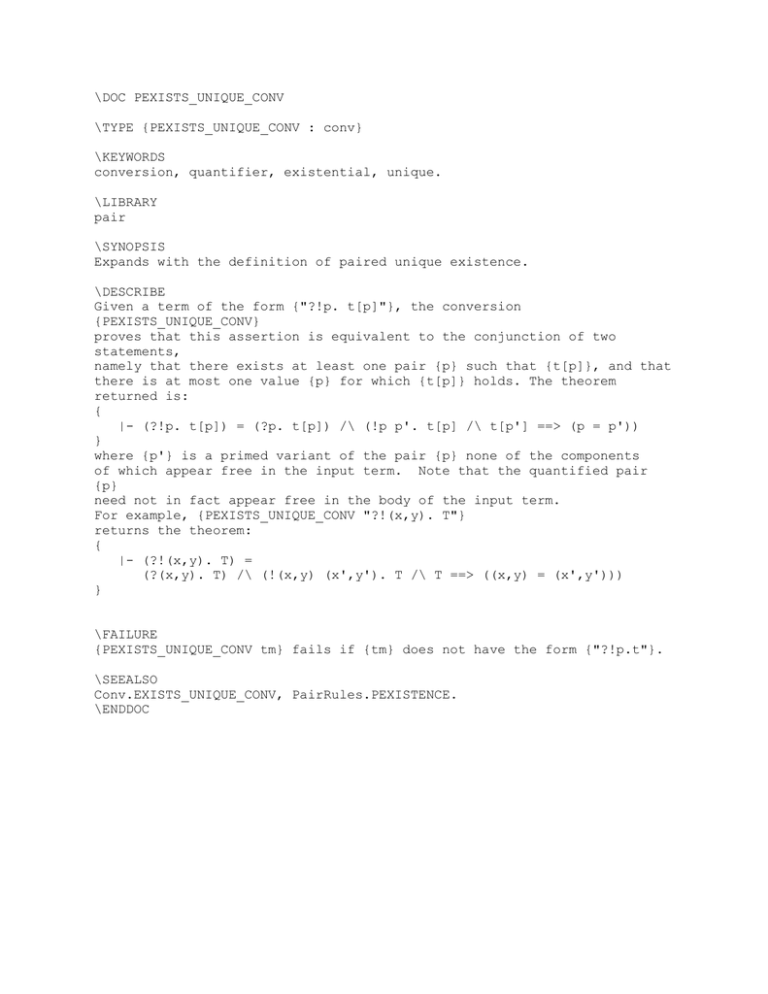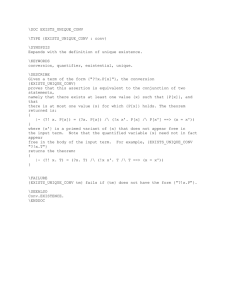\DOC PEXISTS_UNIQUE_CONV \TYPE {PEXISTS_UNIQUE_CONV : conv} \KEYWORDS
advertisement

\DOC PEXISTS_UNIQUE_CONV
\TYPE {PEXISTS_UNIQUE_CONV : conv}
\KEYWORDS
conversion, quantifier, existential, unique.
\LIBRARY
pair
\SYNOPSIS
Expands with the definition of paired unique existence.
\DESCRIBE
Given a term of the form {"?!p. t[p]"}, the conversion
{PEXISTS_UNIQUE_CONV}
proves that this assertion is equivalent to the conjunction of two
statements,
namely that there exists at least one pair {p} such that {t[p]}, and that
there is at most one value {p} for which {t[p]} holds. The theorem
returned is:
{
|- (?!p. t[p]) = (?p. t[p]) /\ (!p p'. t[p] /\ t[p'] ==> (p = p'))
}
where {p'} is a primed variant of the pair {p} none of the components
of which appear free in the input term. Note that the quantified pair
{p}
need not in fact appear free in the body of the input term.
For example, {PEXISTS_UNIQUE_CONV "?!(x,y). T"}
returns the theorem:
{
|- (?!(x,y). T) =
(?(x,y). T) /\ (!(x,y) (x',y'). T /\ T ==> ((x,y) = (x',y')))
}
\FAILURE
{PEXISTS_UNIQUE_CONV tm} fails if {tm} does not have the form {"?!p.t"}.
\SEEALSO
Conv.EXISTS_UNIQUE_CONV, PairRules.PEXISTENCE.
\ENDDOC

